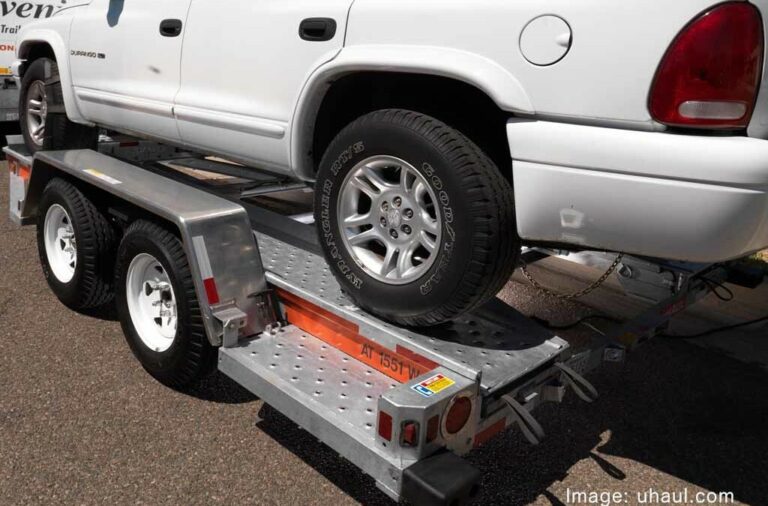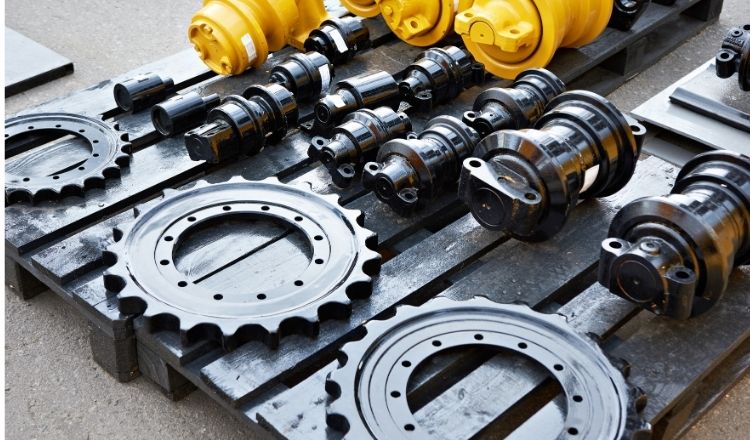Light And Medium Duty Trucks For Sale: Your Comprehensive Guide to Finding the Right Vehicle
Light And Medium Duty Trucks For Sale: Your Comprehensive Guide to Finding the Right Vehicle cars.truckstrend.com
In the bustling arteries of commerce and across the varied landscapes of everyday life, trucks stand as indispensable workhorses. From the local delivery service navigating city streets to the construction crew hauling materials to a job site, and from the family needing a versatile vehicle for weekend projects to the landscaper transporting equipment, light and medium duty trucks are the backbone of countless operations. They represent a critical investment, bridging the gap between personal vehicles and heavy-duty commercial rigs, offering a unique blend of power, versatility, and maneuverability.
This comprehensive guide is designed to be your definitive resource for understanding, locating, and purchasing light and medium duty trucks for sale. We’ll delve into the nuances of each category, explore the benefits of new versus used options, provide practical advice on where to search, and walk you through the essential considerations to ensure you make an informed decision that perfectly aligns with your needs and budget.
Light And Medium Duty Trucks For Sale: Your Comprehensive Guide to Finding the Right Vehicle
Understanding the Landscape: Light vs. Medium Duty Trucks
The world of trucks is broadly categorized by their Gross Vehicle Weight Rating (GVWR), which is the maximum operating weight of a vehicle as specified by the manufacturer, including the vehicle’s chassis, body, engine, fuel, accessories, driver, passengers, and cargo.
1. Light Duty Trucks (Classes 1-3)
Light duty trucks are the most common and recognizable trucks on the road, often serving both personal and commercial purposes. Their GVWR typically ranges from under 6,000 pounds (Class 1) up to 14,000 pounds (Class 3).
- Definition & GVWR Range:
- Class 1: 0-6,000 lbs (e.g., compact pickups like Ford Maverick, smaller cargo vans)
- Class 2: 6,001-10,000 lbs (e.g., half-ton and three-quarter-ton pickups like Ford F-150, Ram 1500, Chevrolet Silverado 1500, larger cargo vans like Ford Transit 250)
- Class 3: 10,001-14,000 lbs (e.g., one-ton pickups like Ford F-350, Ram 3500, Chevrolet Silverado 3500, cutaway chassis for ambulances or small box trucks)

- Common Types: Pickup trucks (half-ton, three-quarter ton, one-ton), cargo vans, passenger vans.
- Typical Uses: Personal transportation, small business delivery, landscaping, construction (light hauling), plumbing, electrical services, family adventures, towing recreational vehicles.
- Key Considerations When Buying:
- Towing & Payload Capacity: Crucial if you plan to haul heavy loads or trailers.
- Fuel Efficiency: A significant factor for daily drivers, especially with rising fuel costs.
- Bed Size & Cab Configuration: Choose based on cargo volume needs and passenger requirements (e.g., regular cab, extended cab, crew cab).
- Drivetrain: 2WD for efficiency, 4WD for off-road capability or adverse weather.
- Technology & Features: Infotainment, safety features, towing aids.

/lights-hang-outdoors-656718094-5ad624fd8023b90036cf2e6c.jpg)
2. Medium Duty Trucks (Classes 4-6)
Medium duty trucks are the workhorses of many commercial operations, designed for heavier hauling and more specialized applications than their light duty counterparts. Their GVWR typically ranges from 14,001 pounds (Class 4) up to 26,000 pounds (Class 6).
- Definition & GVWR Range:
- Class 4: 14,001-16,000 lbs (e.g., larger commercial pickups like Ford F-450/550 chassis cab, Isuzu NPR, Hino 155)
- Class 5: 16,001-19,500 lbs (e.g., Ford F-550/600 chassis cab, Ram 4500/5500 chassis cab, Freightliner M2 106)
- Class 6: 19,501-26,000 lbs (e.g., larger box trucks, refuse trucks, smaller dump trucks, school buses, city utility vehicles)
- Common Types: Box trucks (straight trucks), flatbeds, stake trucks, smaller dump trucks, utility trucks, service trucks, cutaway chassis for various vocational bodies.
- Typical Uses: Local and regional commercial delivery, specialized services (e.g., mobile repair, plumbing, electrical), municipal work, refuse collection, beverage delivery, food service, landscaping (heavy equipment hauling).
- Key Considerations When Buying:
- Chassis Type & Body Upfit: Most medium duty trucks are sold as chassis cabs, requiring a specialized body (box, flatbed, dump, etc.) to be added.
- Engine Power & Torque: Diesel engines are common for their durability and torque, but gasoline options are available. Consider performance for specific loads and routes.
- Transmission: Automatic transmissions are prevalent, but manual options may exist for certain applications.
- Maneuverability: Crucial for urban environments or tight job sites.
- Maintenance Costs & Service Network: Commercial vehicles often require specialized servicing.
- Specialized Equipment Needs: PTO (Power Take-Off) for hydraulic equipment, liftgates, crane mounts, etc.
New vs. Used: Making the Right Choice
Deciding between a new or used truck is one of the most significant factors in your purchase journey. Each option presents distinct advantages and disadvantages.
New Trucks
- Benefits:
- Latest Technology & Features: Access to advanced safety systems, infotainment, and engine efficiency innovations.
- Full Manufacturer Warranty: Provides peace of mind against unexpected repairs.
- Customization: Ability to specify exact configurations, colors, and upfits.
- Lower Initial Maintenance: Fewer immediate repair concerns.
- Financing Incentives: Often come with attractive financing rates from manufacturers.
- Challenges:
- Higher Initial Cost: Significantly more expensive than comparable used models.
- Rapid Depreciation: Trucks lose a significant portion of their value in the first few years.
- Waiting Times: Custom orders can have long lead times.
Used Trucks
- Benefits:
- Lower Purchase Price: Significant cost savings compared to new.
- Slower Depreciation: Most of the initial depreciation has already occurred.
- Immediate Availability: Can often drive away with the truck quickly.
- Proven Reliability (for certain models): Researching known issues for specific models can help identify reliable options.
- Wider Selection: More models, years, and configurations available within a given budget.
- Challenges:
- Unknown History: Potential for hidden issues, accidents, or neglected maintenance.
- No Warranty or Limited: May only come with a short dealer warranty, if any.
- Fewer Customization Options: May need to compromise on specific features or upfits.
- Higher Potential for Immediate Repairs: Might require maintenance soon after purchase.
Practical Advice for Buying Used: Always obtain a comprehensive vehicle history report (e.g., CARFAX, AutoCheck for light duty; often available through dealers for medium duty). Conduct a thorough pre-purchase inspection by a trusted, independent mechanic specializing in trucks. Don’t skip the test drive!
Where to Find Light and Medium Duty Trucks for Sale
The market for trucks is vast, offering numerous avenues to explore.
- Dealerships (New & Used):
- Authorized Brand Dealerships: Ideal for new trucks and certified pre-owned options (e.g., Ford, Ram, Chevy, GMC, Freightliner, Hino, Isuzu). Offer warranties, financing, and after-sales service.
- Independent Used Truck Dealerships: Specialize in a wide range of used makes and models. Prices can be competitive, but due diligence is key.
- Online Marketplaces:
- General Classifieds: Craigslist, Facebook Marketplace (for light duty trucks). Be wary of scams and always meet in a safe, public place.
- Dedicated Commercial Vehicle Sites: TruckPaper.com, CommercialTruckTrader.com, MyLittleSalesman.com, EquipmentTrader.com. These sites list thousands of trucks from dealers and private sellers, often with detailed specifications.
- Auction Sites: GovPlanet.com (government surplus), Ritchie Bros. Auctioneers, IronPlanet (heavy equipment and trucks). Can offer good deals but require quick decision-making and often no pre-purchase inspection.
- Auctions:
- Public/Government Auctions: Local or state government surplus sales.
- Fleet Auctions: Companies selling off large numbers of their used fleet vehicles.
- Salvage Auctions: For trucks that have been totaled but may be repairable (high risk).
- Brokers: Commercial truck brokers can help source specific vehicles, especially for niche applications, saving you time and effort.
- Private Sellers: Often found through online classifieds or word-of-mouth. Can offer the best prices, but generally come with no warranty and require the most careful inspection.
Tips for Searching Effectively:
- Define Your Filters: Use search filters for make, model, year, price range, mileage, GVWR, and specific features.
- Set Up Alerts: Many sites allow you to set up email alerts for new listings that match your criteria.
- Expand Your Search Radius: If you’re looking for something specific, be prepared to travel or arrange shipping.
Key Factors to Consider Before Purchase
A successful truck purchase hinges on careful planning and evaluation.
- Budget:
- Purchase Price: The sticker price, but also consider sales tax, registration fees, and potential upfitting costs.
- Financing: Interest rates, loan terms, down payment.
- Insurance: Commercial insurance can be significant.
- Operating Costs: Fuel, maintenance, tires, oil changes.
- Application/Intended Use: What will the truck primarily do? Hauling heavy materials? Local deliveries? Long-distance travel? Specialized work requiring specific equipment? This dictates the necessary GVWR, engine, and body type.
- Payload and Towing Capacity: Do not underestimate these. Overloading a truck is dangerous, illegal, and can lead to costly damage. Always check the manufacturer’s specifications.
- Fuel Type and Efficiency:
- Gasoline: Typically lower initial cost, quieter, easier to maintain for lighter loads.
- Diesel: Higher initial cost, better fuel economy (especially under load), more torque, longer lifespan, but more complex maintenance and higher DEF (Diesel Exhaust Fluid) costs.
- Electric/Hybrid: Emerging options, offering lower emissions and operating costs, but higher upfront price and range limitations.
- Maintenance and Running Costs: Research common issues for specific models. Consider parts availability and the accessibility of a reliable service network.
- Vehicle History (for used trucks): Look for consistent service records, no major accidents, and clear title.
- Customization/Upfitting Needs: Factor in the cost and time for adding specialized bodies (box, flatbed, dump), liftgates, shelving, toolboxes, or other modifications.
- Regulatory Compliance: Ensure the truck meets all federal, state, and local regulations, including DOT requirements for commercial vehicles, weight limits, and emissions standards.
- Test Drive: Crucial for assessing performance, handling, braking, and overall comfort. Pay attention to strange noises, vibrations, or warning lights.
The Buying Process: A Step-by-Step Guide
Navigating the purchase process systematically can save time, money, and headaches.
- Define Your Needs: Be specific. What’s the maximum weight you’ll carry? How far will you drive daily? What type of cargo? How many passengers?
- Set a Realistic Budget: Include not just the purchase price, but also insurance, fuel, maintenance, and any necessary upfits.
- Research Models & Brands: Identify specific makes and models that fit your criteria and budget. Read reviews and compare specifications.
- Locate Trucks for Sale: Use the resources mentioned above (dealerships, online marketplaces, auctions).
- Inspect Thoroughly (especially used):
- Exterior: Check for rust, dents, frame damage, tire wear, fluid leaks.
- Engine & Drivetrain: Listen for unusual noises, check fluid levels, look for leaks.
- Interior: Check all electronics, HVAC, seat condition.
- Underbody: Inspect suspension, exhaust, and frame for damage or excessive rust.
- Obtain Vehicle History Report (for used): Essential for understanding past ownership, accident history, and service records.
- Negotiate Price: Don’t be afraid to negotiate, especially on used trucks. Be prepared to walk away if the deal isn’t right.
- Secure Financing: Shop around for the best rates from banks, credit unions, or dealership financing.
- Complete Paperwork: Ensure all titles, registrations, and sales agreements are correctly filled out and transferred.
- Arrange Insurance: Get quotes and activate your commercial or personal truck insurance before taking possession.
Potential Challenges and Solutions
Even with careful planning, challenges can arise.
- Finding the Right Truck:
- Challenge: Limited inventory for specific configurations or models.
- Solution: Be patient, broaden your search radius, consider custom ordering (for new), or explore reputable brokers.
- Budget Constraints:
- Challenge: Desired truck exceeds your budget.
- Solution: Consider older models, higher mileage used trucks, or explore alternative financing options. Prioritize essential features over luxuries.
- Unknown History (for Used Trucks):
- Challenge: Risk of buying a "lemon" with hidden issues.
- Solution: Always get a pre-purchase inspection by a certified, independent mechanic. Insist on a vehicle history report.
- Maintenance and Repairs:
- Challenge: Unexpected breakdowns or high maintenance costs.
- Solution: Factor a contingency fund into your budget. Research common issues for the specific model you’re considering. Consider extended warranties for used trucks.
- Upfitting Costs:
- Challenge: Overlooking the additional cost and time for specialized bodies or equipment.
- Solution: Get firm quotes for all necessary upfits before purchasing the chassis. Include these costs in your overall budget.
- Market Fluctuations:
- Challenge: Prices can change based on supply and demand.
- Solution: Stay informed about market trends. Act decisively when a good deal on a suitable truck appears.
Representative Price Table: Light and Medium Duty Trucks For Sale
Prices for light and medium duty trucks vary significantly based on make, model, year, mileage, condition, features, market demand, and location. The table below provides estimated ranges for illustrative purposes only.
| Category | Sub-Type | New Price Range (USD) | Used Price Range (USD) | Typical GVWR (lbs) | Key Applications |
|---|---|---|---|---|---|
| Light Duty | Half-Ton Pickup | $30,000 – $70,000 | $15,000 – $50,000 | 6,000 – 7,000 | Personal, small business, light towing |
| (Class 1-3) | Heavy-Duty Pickup | $45,000 – $90,000+ | $25,000 – $75,000+ | 8,500 – 14,000 | Heavy towing, construction, commercial |
| Cargo Van | $35,000 – $65,000 | $18,000 – $45,000 | 8,500 – 10,000 | Delivery, service, mobile workshops | |
| Medium Duty | Class 4/5 Chassis Cab | $50,000 – $90,000+ | $25,000 – $70,000+ | 14,001 – 19,500 | Box trucks, flatbeds, dump (small), utility |
| (Class 4-6) | Class 6 Chassis Cab | $70,000 – $120,000+ | $35,000 – $90,000+ | 19,501 – 26,000 | Larger box trucks, refuse, specialized equipment |
Disclaimer: The prices presented in this table are highly variable and serve only as a general guide. Actual prices will depend on numerous factors including specific make, model, year, mileage, overall condition, included features, market demand, geographical location, and whether the vehicle is purchased from a private seller, independent dealer, or authorized dealership. Always conduct thorough market research and obtain specific quotes for the exact truck you are interested in.
Frequently Asked Questions (FAQ)
Q1: What is the main difference between light and medium duty trucks?
A1: The primary difference lies in their Gross Vehicle Weight Rating (GVWR). Light duty trucks (Class 1-3) have a GVWR up to 14,000 lbs, suitable for personal use and lighter commercial tasks. Medium duty trucks (Class 4-6) have a GVWR from 14,001 lbs up to 26,000 lbs, designed for heavier commercial hauling and specialized vocational applications.
Q2: How do I determine the right truck for my business needs?
A2: Start by assessing your specific requirements:
- Payload: What is the maximum weight you’ll need to carry?
- Towing: Will you be towing trailers, and if so, what’s their maximum weight?
- Cargo Volume/Type: What type of cargo will you transport, and how much space does it require?
- Route: Will you be driving in urban areas (requiring maneuverability) or on highways (prioritizing fuel efficiency)?
- Special Equipment: Do you need a specific body type (box, flatbed, dump) or features like a liftgate, crane, or PTO?
Q3: Is it better to buy a new or used light/medium duty truck?
A3: It depends on your budget, need for customization, and risk tolerance. New trucks offer warranties, the latest tech, and full customization, but at a higher cost and faster depreciation. Used trucks are more affordable and offer immediate availability, but come with potential risks related to unknown history and lack of warranty.
Q4: What should I look for when inspecting a used truck?
A4: Beyond a professional mechanic’s inspection, personally check:
- Frame: Look for cracks, bends, or significant rust.
- Engine & Transmission: Listen for unusual noises, check for fluid leaks, ensure smooth shifting.
- Tires: Check tread depth and even wear.
- Brakes: Test for responsiveness and any grinding or squealing.
- Fluids: Check oil, coolant, brake fluid levels and condition.
- Electrical: Test all lights, wipers, HVAC, and power windows/locks.
- Cab Interior: Look for excessive wear, damage, or warning lights.
Q5: How important is a vehicle history report (VHR) for a used truck?
A5: Extremely important. A VHR can reveal past accidents, flood damage, salvage titles, odometer discrepancies, service history, and ownership changes. It’s a crucial tool for mitigating risk when buying used.
Q6: Can I finance a used commercial truck?
A6: Yes, absolutely. Many lenders specialize in commercial truck financing, including banks, credit unions, and independent finance companies. Interest rates and terms will depend on your creditworthiness, the truck’s age, and its condition.
Conclusion
The decision to purchase a light or medium duty truck is a significant one, whether for personal utility or commercial enterprise. These versatile vehicles are more than just transportation; they are essential tools that drive productivity, enable service delivery, and support countless daily operations. By understanding the distinctions between light and medium duty categories, carefully weighing the pros and cons of new versus used, diligently researching where to buy, and meticulously considering all relevant factors, you empower yourself to make an informed and strategic investment.
Remember, the right truck is an asset that will serve you reliably for years to come. Take your time, do your homework, and don’t hesitate to seek expert advice. With this comprehensive guide in hand, you are well-equipped to navigate the market and find the perfect light or medium duty truck for sale that meets your exact needs and helps you move forward with confidence.





